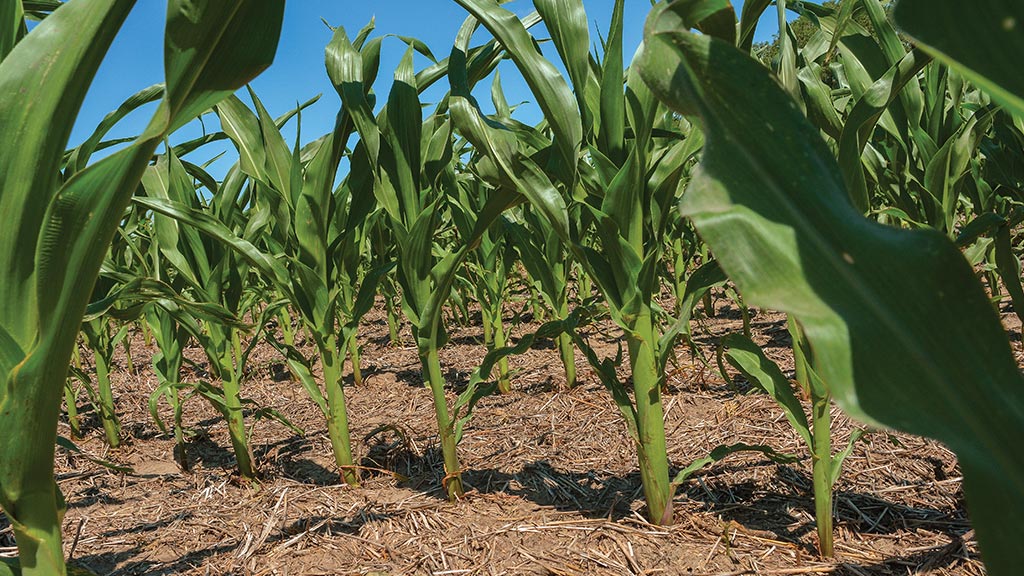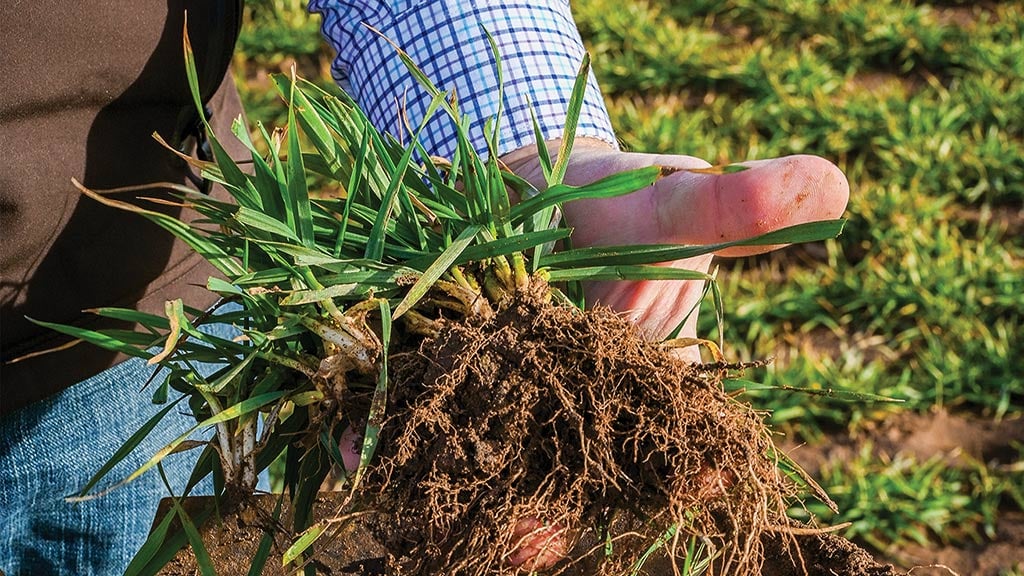
According to Purdue University, 10-15 pounds of sulfur per acre applied from before planting to sidedressing is ideal for sulfur-deficient corn.
Agriculture, Sustainability June 01, 2024
Spotlight on Sulfur
The missing ingredient in many row crop nutrient plans.
by Bill Spiegel
From his farm in north central Oklahoma, Kent Martin has learned first-hand that on many farms, lack of sulfur fertility is a lost opportunity.
For decades, farmers never had to worry about sulfur application, because "dirty air" from atmospheric deposition fell onto crops using rain as a carrier. The 1990 Clean Air Act forced the removal of some 10 million tons of sulfur emissions from U.S. factories. In turn, farmers lost their source of "free" sulfur.
Martin, who farms row crops, has a cow herd, and is a consultant, says sulfur is considered the fourth most essential crop nutrient, behind nitrogen, phosphorus and potassium. As farmers learn more about sulfur deficiency in their crops, the adoption of sulfur fertilizers is rapidly rising.
That corresponds with the decline in atmospheric sulfur deposition, and an increase in U.S. corn yield (164 bushels per acre in 2009, compared to 177 bushels per acre in 2022) and acreage (79.5 million acres in 2009 and 86.5 million acres in 2023), according to USDA.
Between 2005 and 2020, Iowa State University research showed that nearly half of 150 corn, alfalfa, and soybean trials had a statistically significant yield reduction due to lack of sulfur, Martin says.
Adequate sulfur nutrition is vital in photosynthesis, chlorophyll formation and improved grain quality. It is required for synthesis of certain amino acids and proteins, is necessary for efficient nitrogen fixation in legumes, plus aids in seed production and oil synthesis, he adds.
Data from the International Plant Nutrition Institute shows that a 180 bushel-per-acre corn crop removes 18 pounds of sulfur from the soil, and a 60 bushel-per-acre soybean crop removes 12 pounds of sulfur. Meanwhile, growers should be mindful of the nitrogen-to-sulfur uptake ratio in crops, adds Tryston Beyrer, crop nutrition specialist at the Mosaic Company. In corn, that ratio is 15 pounds of nitrogen per one pound of sulfur; in wheat and canola, 7:1.
"If farmers are accustomed to applying nitrogen to their crops, they should apply sulfur at the same time," Beyrer says.
Growers can test for soil-available sulfur with a simple soil test prior to the planting season. Soil sulfur testing is considered variable, because it is a leachable nutrient, he adds. Or, growers can collect tissue tests during the growing season.
"If you see a visual deficiency in the crop, we may have lost the opportunity to manage sulfur for that year," Beyrer continues. "But that may be a tool that can help us tweak our recommendation for future years."
Symptoms of sulfur deficiency include yellowing of new plant growth on corn, and shortened internodes and erratic difference in plant growth, Martin adds.
Note the soil type, too. Sandy soils may require "spoon-fed sulfur" through split applications, or apply sulfate to get more immediate response, along with elemental sulfur which will break down more slowly and be available later in the season. Clay soils can "hang onto" sulfate longer than sand, Martin says.
Plants use the oxidized form of sulfur, or sulfate. Therefore, if plants show deficiency symptoms, growers should plan to apply a sulfate product. Elemental sulfur will take time to convert to sulfate via oxidation, he adds.
Crops use sulfur throughout the growing season, so plan timing and product accordingly. ‡
Above (photos by Katelee Martin). Apply sulfur in wheat prior to Feekes growth stage 5. Oklahoma farmer Kent Martin notes sulfur deficiencies began with passage of the Clean Air Act.
Read More

AGRICULTURE, SUSTAINABILITY
Taste of History
Quebec grower says heirloom varieties' flavor can't be matched.

AGRICULTURE, LIVESTOCK/POULTRY
Stressing Herd Health
Prevent, observe, and adapt to stay ahead in challenging conditions.


